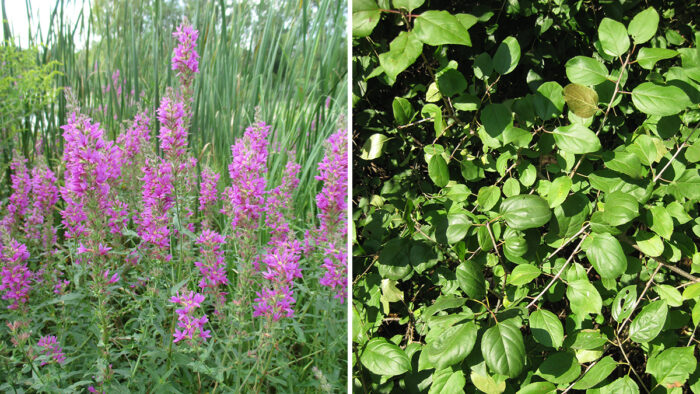
As another gardening season kicks into gear, one of the more unsavory, yet necessary, tasks is scouting for problematic, common invasive plants. These undesirable plants typically infiltrate our gardens, meadows, and woodlands. Their presence is not only unwelcome, but it also impacts and challenges our more desirable plants and precious ecosystems. In cases where we are fostering or caring for native plantings, these problematic nonnatives gobble up real estate at the expense (and health) of “good guy” plantings, and aggressive control is warranted.
The first step in this process is proper identification of these thugs and then a committed plan for control. Perhaps you’ve inherited populations of these plants and aren’t sure where to start. Don’t put off your initial battle, though, as the reproductive rate for all of the plants mentioned in this article is robust and there is no time to lose.
I’m not a huge fan of chemicals, but in battling all of the plants on this list, I’ve had to lean on herbicide use in most instances. I was sure to thoroughly research product options, recommendations, application details, timing, and safety precautions prior to any use; avoiding damage to neighboring desirable plants was always a goal. Thankfully, there are significant resources you can explore in supporting your control plan(s).
The first step in combating invasives, however, is knowing who the culprits are. Here are some of the notorious herbaceous and woody plant thugs that have taken up residence in the Midwest (and beyond) that should be on your radar for removal. They all spread by seed, have hardy dispositions, and are displacing native vegetation. I encourage you to do your own research on the recommended (and safest) removal practices for each of these plants in your situation.
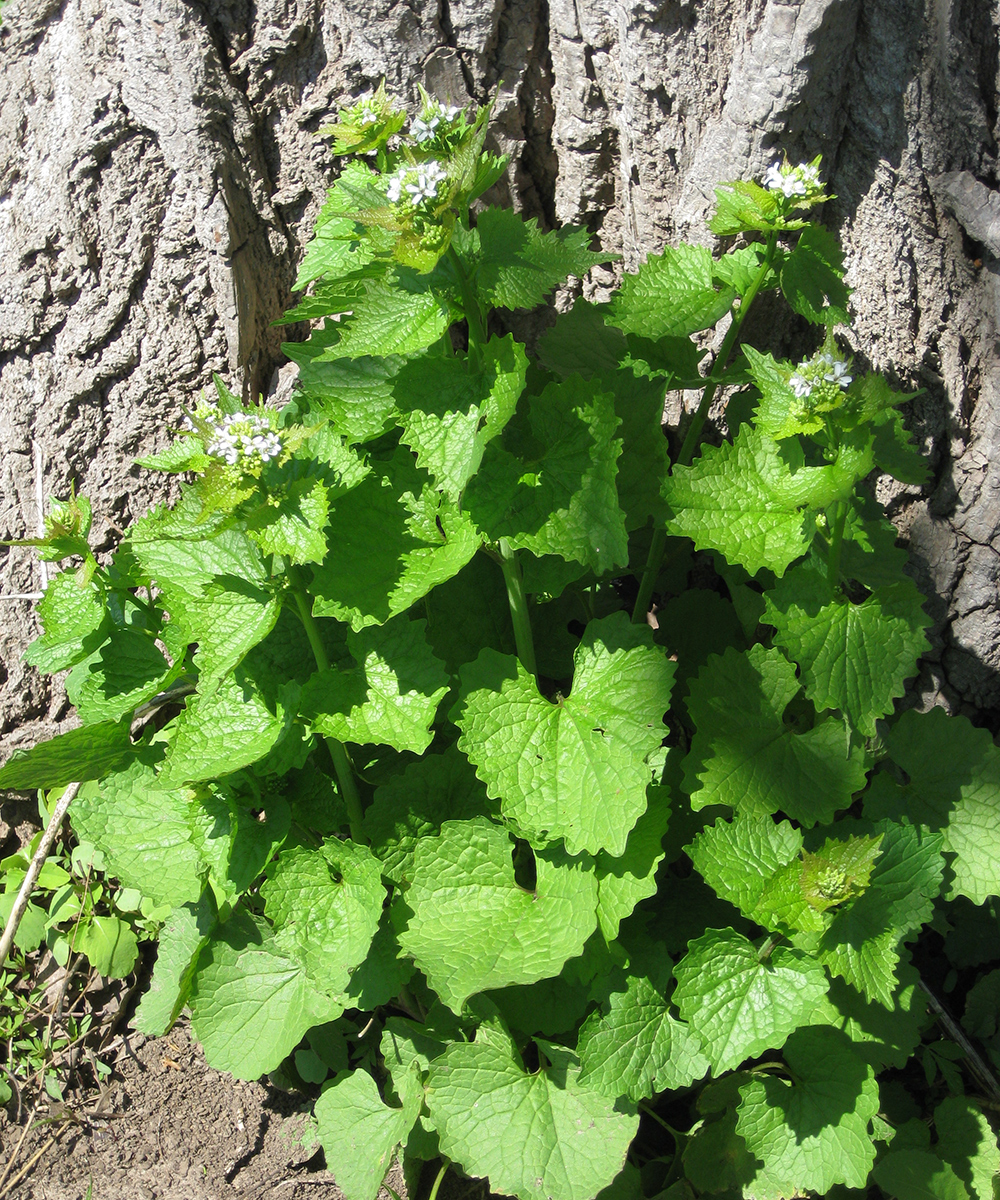
Garlic mustard is a biennial invasive that needs to be removed at the root
Native to northeastern Europe, garlic mustard (Alliaria petiolata, Zones 3–8) has marched across a good portion of North America and is distributed throughout the northeastern and midwestern United States. This biennial weed is found in 30 states and three Canadian provinces. The spread of this plant by seed (which can remain viable for up to seven years!) is tough to keep up with, but the goal in selectively eradicating garlic mustard is to leave the desired plant community intact.
Control efforts require many years of commitment, observation, and action. Removal can be accomplished manually or with targeted foliar herbicides. Removing the plant should include the taproot, and plants should be bagged, particularly those in the second year of growth that will flower and reseed quickly in spring. Don’t ever compost garlic mustard. Herbicide applications on the first year (rosette) stage can be accomplished all season long. Rely on proper identification and targeting, and follow recommendations for any chemical use from your local extension office.
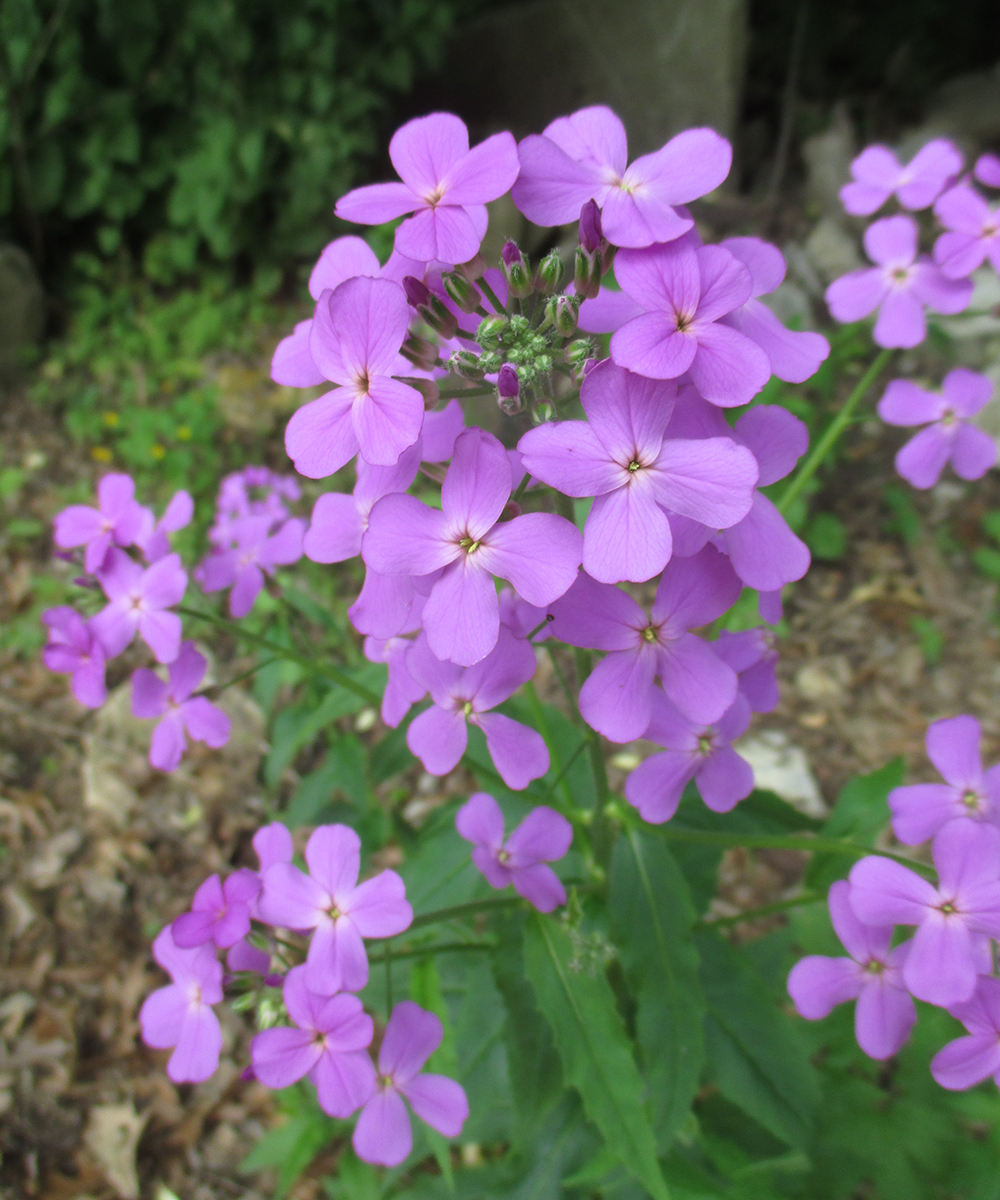
Dame’s rocket is a deceptively beautiful biennial thug
Introduced to North America in the 1600s, dame’s rocket (Hesperis matronalis, Zones 3–8) is a Eurasian biennial that has naturalized across the landscape after originally being used as an ornamental plant. A member of the mustard family, dame’s rocket reseeds prolifically and is frustratingly still used in some “wildflower mixes.” Habitats invaded by this plant include open woodlands, prairies, roadsides, ditches, and other disturbed areas.
Frequently misidentified as a phlox (Phlox spp. and cvs., Zones 3–9), dame’s rocket has fragrant flowers (white, purple, or pink) with four petals in a cross pattern, whereas phlox flowers have five petals. Hand pulling of smaller populations is possible, although fall application of herbicide on the basal rosettes when still green and vulnerable is effective. Cutting and disposing of emerging flower stalks can mitigate some reseeding issues, but be sure to research proper identification and suggested control efforts for this beautiful thug.
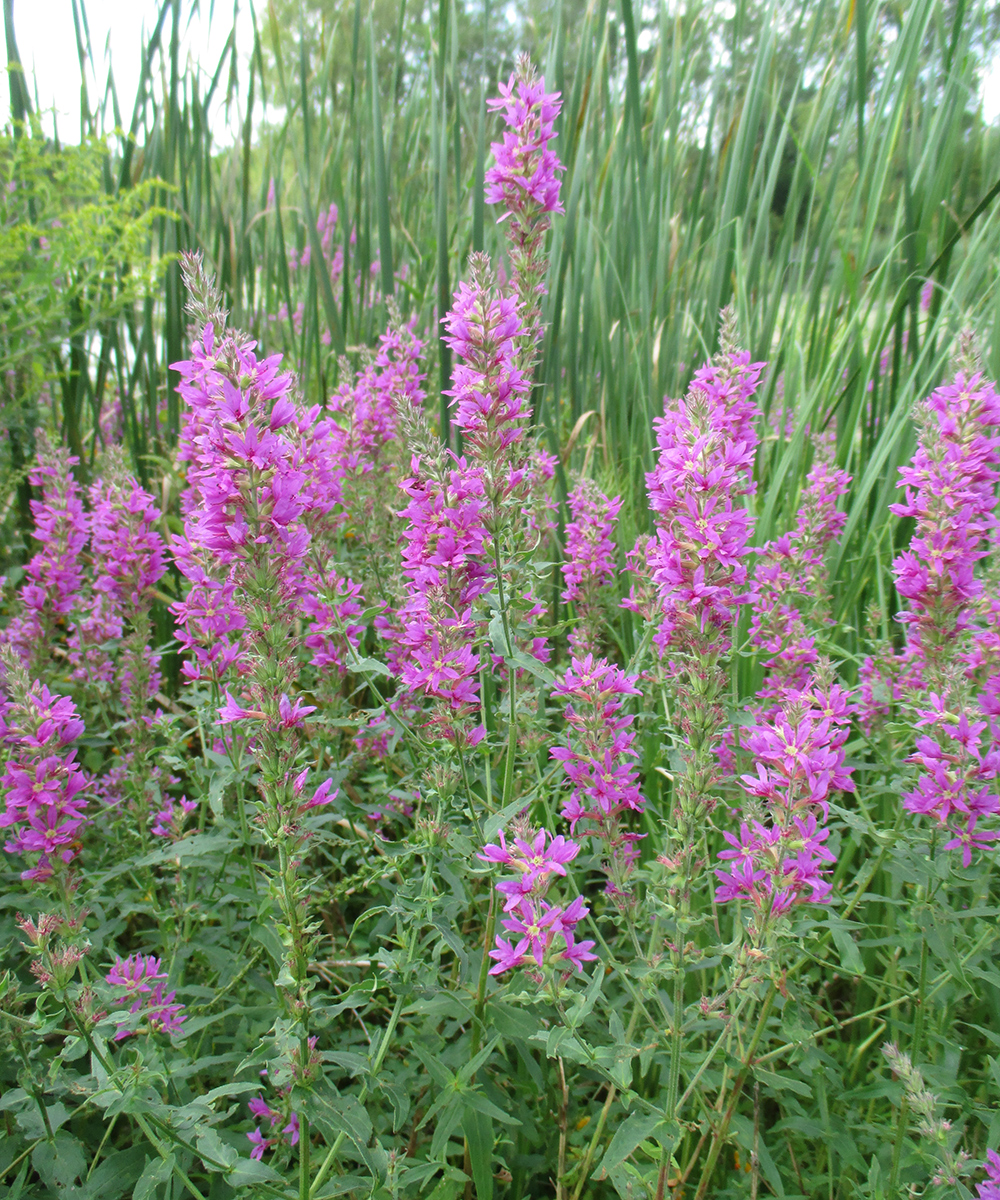
Purple loosestrife is a perennial invasive that takes over wetlands
Present now in almost every state, purple loosestrife (Lythrum salicaria, Zones 3–9) has the most destructive impacts on the ecology of aquatic systems by displacing native wetland plants. Introduced to the East Coast in the 1800s, this rhizomatous spreader also established quickly by seed. Undisputedly beautiful in summer bloom, one plant can create up to 2 million seeds!
Research appropriate aquatic formulations of herbicides that can be sprayed in midsummer through early fall when identification is easiest due to the flowering structures. Manual digging for small populations can work, but even small root sections or remaining stem sections will grow. There is some promising work being done in Wisconsin and elsewhere in terms of biocontrol that introduces insect enemies to combat the growing population. Minimizing site disturbances when combatting purple loosestrife populations is vital, as is continued follow up and observations.

Common buckthorn is a regrettably introduced tree formerly used as a hedging plant
Common buckthorn (Rhamnus cathartica, Zones 3–8) is an extremely aggressive tree that has created dense thickets, along with other species of nonnative buckthorn, in many states. It has become burdensome to target and remove simply due to immense and concentrated populations. Introduced by European colonists in the early 1800s as a hedging plant, common or European buckthorn quickly escaped cultivation and continues to be distributed far and wide by birds. The seeds remain viable for many years, and this tree outcompetes and overshadows much of our native understory in woodland situations. There is lots of research out there on best practices for removal, which undoubtably leads to a significant amount of “elbow grease” in an ongoing war. Click here for some excellent information from the University of Wisconsin Cooperative Extension.
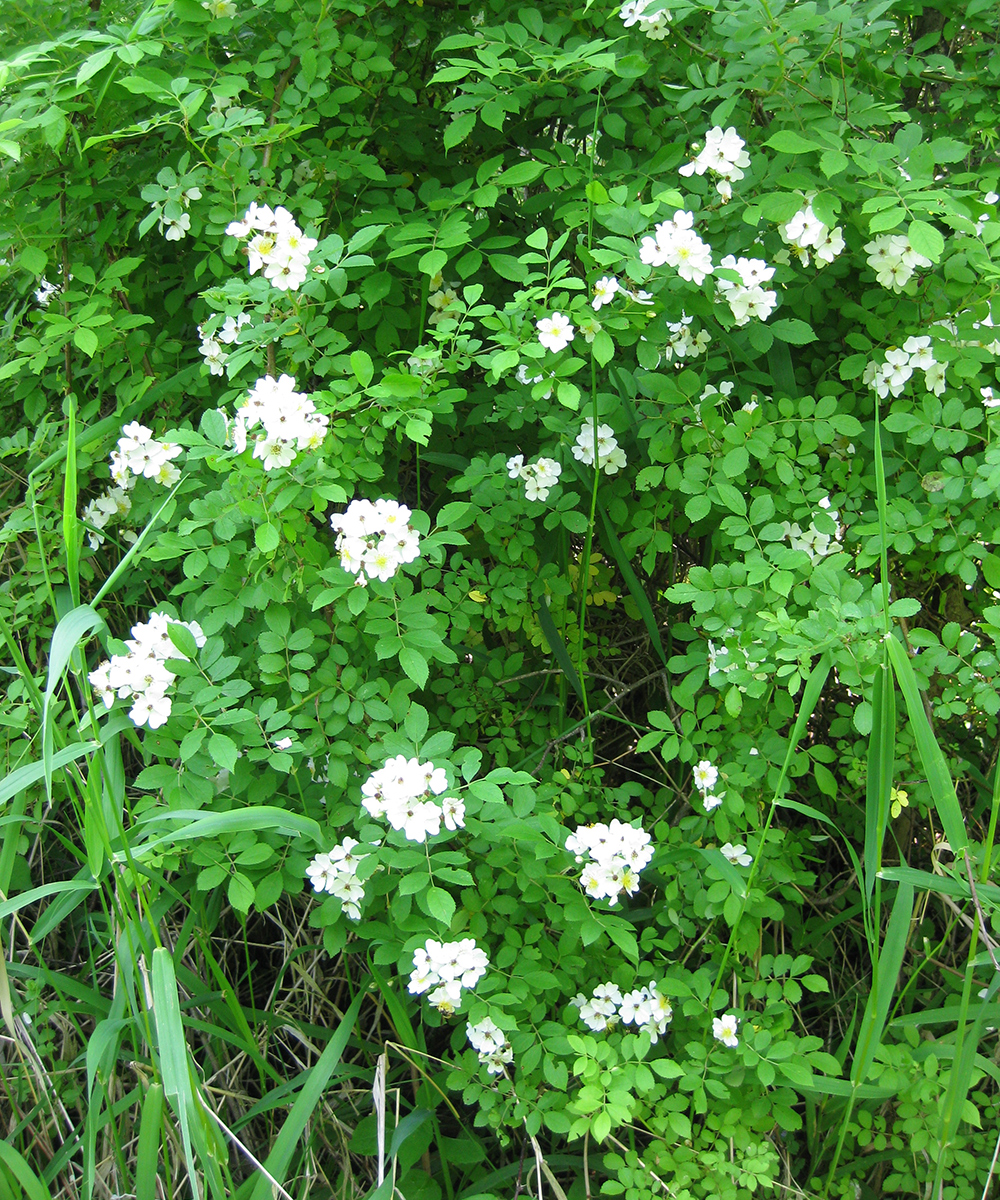
Multiflora rose is a thorny invasive nightmare with long-lived seed
This is another case of good intentions gone sour. Multiflora rose (Rosa multiflora, Zones 3–9) was introduced to the eastern United States in 1866 as rootstock for ornamental roses. Beginning in the 1930s, the U.S. Soil Conservation Service promoted it for use in erosion control and as “living fences” to confine livestock. The seed distribution of this plant is extraordinary, with seed viability of 10 to 20 years, necessitating a lengthy commitment for removal. Targeted herbicides and proper mechanical removal have been researched, and those methods can be found in a variety of resources. Watch those thorns!
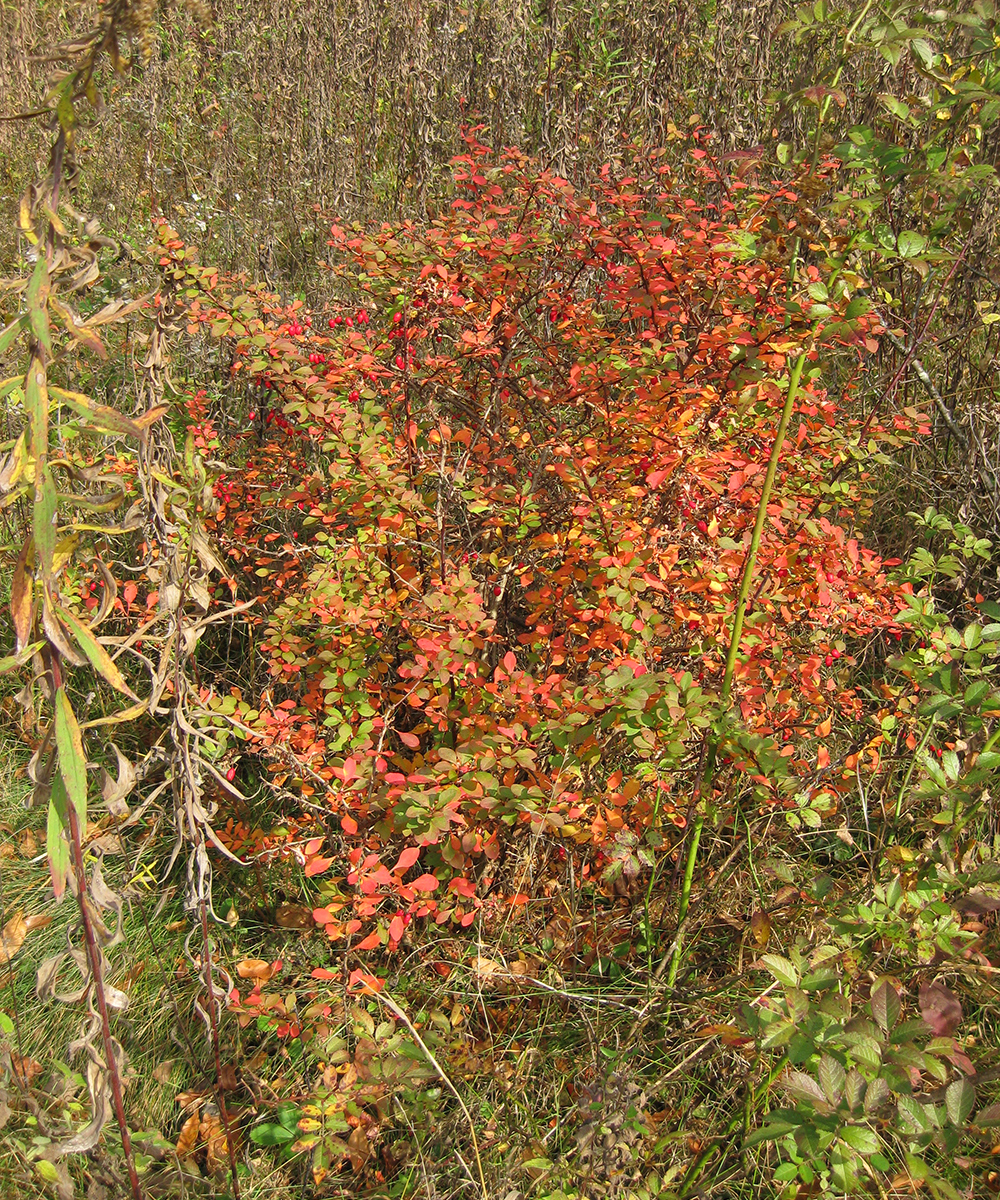
Japanese barberry is an out-of-control invasive landscape shrub
First imported in 1875 as an ornamental, Japanese barberry (Berberis thunbergia, Zones 4–8) continues to be cultivated in earnest, with seed spread by birds. This hardy shrub (and its many cultivars) is still a very popular landscape plant in many locations. Surprisingly shade tolerant, barberry is quick to establish from seeds in woodland settings. The plants can also root where stems touch the ground, and the heavy, low shade from barberry inhibits the growth of native plants. Minimizing damage to desirable plants when eradicating barberry should be a priority, and the best treatment seems to include a soil-line cut followed by chemical treatment.

Burning bush may have great fall foliage, but it’s highly invasive
Introduced in 1860 as a landscape shrub, burning bush (Euonymus alatus, Zones 4–8) is a native of northeastern Asia, Japan, and Central China that continues to be sold and promoted widely for its durability, hardiness, and exceptional fall color. Reseeding of this plant (by bird distribution) has become problematic in many locations, with “seed shadows” of newly seeded offspring also seen under larger, fruiting plants. Manual and chemical controls exist but require diligence and commitment. The red fall color, even on small seedlings, is a great way to identify this invader in the fall months.
—Mark Dwyer is the garden manager for the Edgerton Hospital Healing Garden in Edgerton, Wisconsin, and he operates Landscape Prescriptions by MD.
Photos: Mark Dwyer


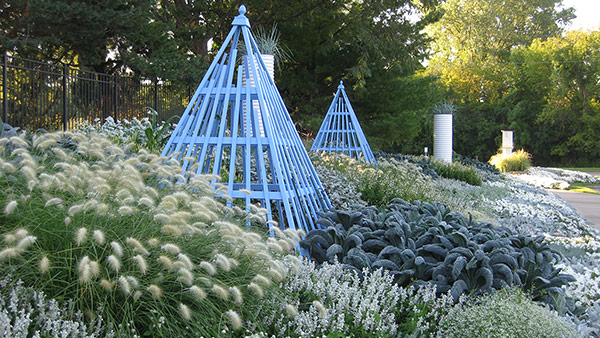
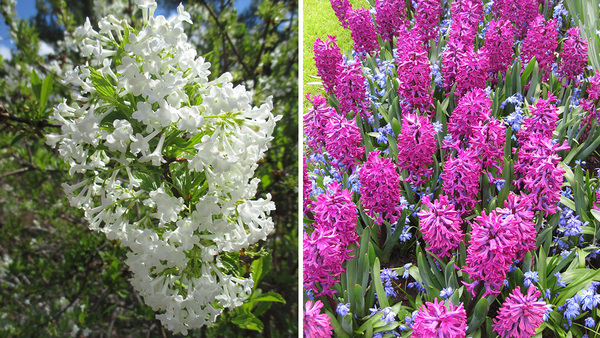














Comments
Very helpful article. I have a couple other plants to add to your invasive plants: Autumn Olive and Poke Weed. Both are spread by seed. The autumn olive can take over a complete area. Black locust trees can also be a pain as they can spread long distances via runners.
I’m doing battle with creeping bellflower. Our unusually wet spring has caused it to explode in a bushy area of our Colorado yard.
Log in or create an account to post a comment.
Sign up Log in